(Page créée avec « In a kitchen for 2 people, we propose 2-3 drawers, measuring 15cm height by 40-50cm depth by 50cm width. ») |
|||
| Ligne 86 : | Ligne 86 : | ||
|Step_Content=Let's navigate this category by way of example: Apricot, eggplant, avocado, banana, citrus, tomatoes, but equally eggs or butter in a butter dish if it's not too hot. | |Step_Content=Let's navigate this category by way of example: Apricot, eggplant, avocado, banana, citrus, tomatoes, but equally eggs or butter in a butter dish if it's not too hot. | ||
| − | + | In a kitchen for 2 people, we propose 2-3 drawers, measuring 15cm height by 40-50cm depth by 50cm width. | |
Il est pensé pour que l’avant et l’arrière du tiroir laisse circuler l’air. | Il est pensé pour que l’avant et l’arrière du tiroir laisse circuler l’air. | ||
Version du 10 septembre 2020 à 03:42
Description
Kitchen Food Storage Enabling Proper Environments for Different Food Types
Sommaire
Sommaire
- 1 Description
- 2 Sommaire
- 3 Introduction
- 4 Étape 1 - The "Zero Waste" Approach
- 5 Étape 2 - Step 2 - General Information on the Food Storage Implements
- 6 Étape 3 - Environment 1: Dry, Ventilated, Room Lit
- 7 Étape 4 - Ambiance 2: Sec, Aéré, Sombre
- 8 Étape 5 - Ambiance 3: Sombre, Frais, Humide
- 9 Étape 6 - Ambiance 4: Sombre et Froid
- 10 Étape 7 - Fruits et les légumes climactériques
- 11 Étape 8 - Tableau récapitulatif
- 12 Notes et références
- 13 Commentaires
Introduction
A Quick Survey of the Situation of Food Waste
In the world, 1/3 of the total of food production is thrown away.
In France, this constitutes 10 billion kilograms (22 billion pounds) of wasted food each year, the carbon impact of which is equivalent to 5 times the country's domestic air traffic per year.
The analysis of food waste data shows that 33% of this is made on the last link of the chain: the consumer.
The losses amount to a global cost of 160€ ($189 USD) /year per person.
Quantitatively, fruits and vegetables constitute the most substantial losses (50%).
However, even though they represent just 6% of all food waste, it is animal products (meat, fish, dairy) that represent the most significant financial loss.
Causes of Food Waste
In order to design and implement the proper solutions to reduce waste, it is useful to take a look at an analysis of its causes:
•Sociological causes: Our pace of living; family structures; the ways of organizing our days and our meals shifting over time. We are more hurried and less attentive, which brings about food waste.
•Cultural causes: Our perceptions of food, our aesthetic criteria, and our styles of feeding ourselves lead to a dismissal of products that are nonetheless consumable.
•Poor knowledge of keeping or conserving foods: conserving is not synonymous with making something cold--a refrigerator is not made to accommodate all types of food. In addition, confusions arise between terms such as "Use by," "Best-Before," and "Expired by."
•Organizational problems: We lack organization before doing our grocery shopping, wherein we question our needs and plan to buy the appropriate quantities. Refrigerators and cabinets are equally sources of numerous losses due to storage space that encourages stacking new food in front of older food.
It's important to note that a good number of these causes can be remedied by suitable practices that anyone can put into place. Some technical solutions can come to our aid, mainly by:
•Creating the right environments for conserving food according to food type
•Promoting proper visibility of produce
•Making them more easily accessible
Étape 1 - The "Zero Waste" Approach
The first step in using a food-storage system such as this is for the user to question the ways in which they buy and consume.
In fact, the food storage modules that we're going to propose below are mainly thought of for raw and fresh foods. For example, it would be complicated for the user feeding themselves with ready-made meals to benefit from the technical suggestions provided.
The "Zero Waste" approach, originating from Franco-American Béa Johnson, is an excellent method to put into practice. It contributes at the same time to the reduction, in a significant way, of global production of waste material (packaging, plastic, etc).
Zero Waste France is a very good network for additional information on helping consumers take these actions.
Étape 2 - Step 2 - General Information on the Food Storage Implements
Since we mainly need to work on waste consisting of fruit, vegetables, and animals products, the focus is on short-term conservation.
Food conservation does not mean keeping cold but rather conserving the nutritional quality and taste of the foods.
For this reason, several storage environments are worth adopting for a built food storage solution.
Generally, among all short-term storage environments, the most basic technology of most value, in our experience, is the storage rack with slide-out trays.
It's a technical solution that can be easily integrated into a kitchen, permits direct visibility of all contents, and facilitates easy access to all the foods contained within, as opposed to a cupboard or a refrigerator.
The principal use of the sliding trays or drawers is to allow for good air circulation, a very important factor for keeping fruits and vegetables fresh. It can be made using wooden battens (between 2 and 3 cm wide each) or using wire netting or screen.
For the assembly of the food storage rack, an air gap of 3-4cm is to be integrated to back side in order for "exhaust" air and humidity to flow and not stagnate at the risk of spoiling the foods more quickly.
Étape 3 - Environment 1: Dry, Ventilated, Room Lit
Let's navigate this category by way of example: Apricot, eggplant, avocado, banana, citrus, tomatoes, but equally eggs or butter in a butter dish if it's not too hot.
In a kitchen for 2 people, we propose 2-3 drawers, measuring 15cm height by 40-50cm depth by 50cm width.
Il est pensé pour que l’avant et l’arrière du tiroir laisse circuler l’air.
Étape 4 - Ambiance 2: Sec, Aéré, Sombre
Cette ambiance de conservation est intéressante notamment pour les pommes de terres, les oignons, l’ail, les courges, etc. L’ambiance noire évite la germination des tubercules, racines et limite la maturation de certains fruits.
Dans une cuisine pour 2 personnes, nous proposons 2 tiroirs en claies tapissées d’un tissu tel que toile de lin ou jute pour créer à la fois le noir et assurer la ventilation.
Environ 25 cm de haut, 40 à 50cm de profondeur et 50 cm de large. Il est nécessaire de les faire un peu plus haut que l’ambiance précédente pour pouvoir conserver des carotte en verticale dans un bac à sable légèrement humide qui sera à prévoir dans l’un des tiroirs.
Étape 5 - Ambiance 3: Sombre, Frais, Humide
Pour un habitat existant:
Cette ambiance est la plus difficile à créer dans un habitat existant cependant est très intéressante car peut permettre l’arrêt du réfrigérateur une partie de l’année.
Sur de l’existant, Il est possible, en intérieur, de s’inspirer du frigo du désert ou « zeer pot ». Il s’agit d’une poterie imbriqué dans une seconde poterie. Entre les 2 deux, du sable est ajouté.
Les aliments sont placés dans la poterie du milieu et le sable estrégulièrement humidifié. Par effet d’évapo-transpiration, la température intérieure peut descendre de 5 à 10°C par rapport à la température ambiante.
Pour un habitat neuf:
Dans le cas d’un habitat neuf, il est possible d’imaginer, à l’instar des anciens garde-manger parisiens, des caissons donnant sur l’extérieur, au Nord, via une fenêtre dédiée à cette usage. (Ou dans une cloison non-isolée à cet endroit)
On va retrouver dans cette ambiance : Artichaut, concombre, haricot, panais, beurre à la mi-saison, etc
Pour le dimensionnement, un volume intérieur de 40L divisé en 2 est convenable. (par exemple 40cm de haut, 40 cm de large et 30 cm de profondeur)
Étape 6 - Ambiance 4: Sombre et Froid
Cette ambiance est réalisée grâce au réfrigérateur. L’idée est de travailler à réduire la taille de celui-ci pour ne garder à l’intérieur que reste de repas, crèmerie, viande, poisson et boisson fraîche.
En autre effet positif, la diminution de la taille du réfrigérateur agit directement sur la réduction de la consommation électrique.
Pour 2 personnes, nous proposons l’utilisation d’un réfrigérateur 40L (type réfrigérateur de bar). Selon le budget accordé, il est possible de trouver des réfrigérateurs tiroirs qui permettent une vue directe sur tout le contenant cependant ils coutent sensiblement plus chers.
Attention cependant à choisir un réfrigérateur où le stockage vertical de bouteilles standard est possible pour plus de fonctionnalité.
On évitera de placer le réfrigérateur à coté du four (ce qui est le cas dans de nombreuses cuisines) pour plus d’efficacité.
Le dégagement de chaleur par l’arrière du réfrigérateur dans la lame d’air du meuble favorisera la circulation de l’air et de l’humidité de l’ensemble du meuble de conservation
Étape 7 - Fruits et les légumes climactériques
En plus des ambiances, un second paramètre entre en jeu dans laconservation des fruits et légumes : c’est leur propriété à émettre ou non de l’éthylène, un gaz qui favorise le murissement et à y être sensible ou non selon leur type.
Les fruits et légumes qui produisent de l’éthylène et qui continuent de murir après récolte sont dits « climactériques » tandis que d’autres peuvent y être très sensibles et pourrirent plus rapidement au contact de l’éthylène.
Une règle simple est d’éviter de mélanger les aliments qui dégagent de l’éthylène de ceux qui y sont seulement sensible, c’est pourquoi il faut au moins 2 tiroirs par ambiance et qu’ils soient assez grands et aérés pour que l’éthylène s’évacue correctement.
Étape 8 - Tableau récapitulatif
| Low-tech Lab / ambiance par aliment | Ambiance de conservation courte | Aspect climactérique | ||||
| Aliments | Frais, humide et sombre | Sec, aéré, à la lumière | Sec, aéré, dans le noir | Autres ? | Producteur d'éthylène | Sensible à l'éthylène |
| Abricot | x | x | x | |||
| Ail | x | |||||
| Ananas | x | |||||
| Artichaut | x | |||||
| Asperge | x | Bac réfrigérateur | ||||
| Aubergine | x | x | ||||
| Avocat | x | x | x | |||
| Banane | x | x | x | |||
| Bette | x | |||||
| Betterave rouge | x | |||||
| Brocolis | x | Bac réfrigérateur | x | |||
| Carotte | x | x | ||||
| Céleri | x | |||||
| Cerise | x | x | ||||
| Champignon | x | |||||
| Chou-fleur | x | Bac réfrigérateur | x | |||
| Chou-pommé | x | |||||
| Citron | x | |||||
| Citrouille | x | |||||
| Clémentine | x | |||||
| Concombre | x | x | x | |||
| Coriandre, cumin,…. | x | |||||
| Courge | x | |||||
| Courgette | x | x | ||||
| Echalote | x | |||||
| Endive | x | Bac réfrigérateur | x | |||
| Fraise | x | |||||
| Graines alimentaires (haricots, lentilles, fèves, | x | |||||
| Graines aromatiques | x | |||||
| Haricot vert | x | Bac réfrigérateur | x | |||
| Kiwi | x | x | ||||
| Mangue | x | |||||
| Melon | x | x | x | |||
| Mûre | x | |||||
| Navet | x | |||||
| Oignon | x | |||||
| Orange | x | |||||
| Panais | x | |||||
| Pastèque | x | |||||
| Patate douce | x | |||||
| Pêche | x | x | x | x | ||
| Persil, ciboulette, menthe, coriandre frais, aneth, | Dans un verre d’eau | |||||
| Poire | x | x | x | x | ||
| Poireau | x | |||||
| Poivron | x | x | x | |||
| Pomelo | x | |||||
| Pomme | x | x | x | |||
| Pomme de terre | x | |||||
| Prune | x | x | x | x | ||
| Radis | x | |||||
| Raisin | x | |||||
| Roquette | x | |||||
| Salade | x | x | ||||
| Tomate | x | x | x | |||
| Reste alimentaire | Réfrigérateur | |||||
| Cremerie | Réfrigérateur | |||||
| Viande et poisson | Réfrigérateur | |||||
Notes et références
Redigé par Pierre-Alain Lévêque pour le Low-tech Lab, Aout 2019
Published
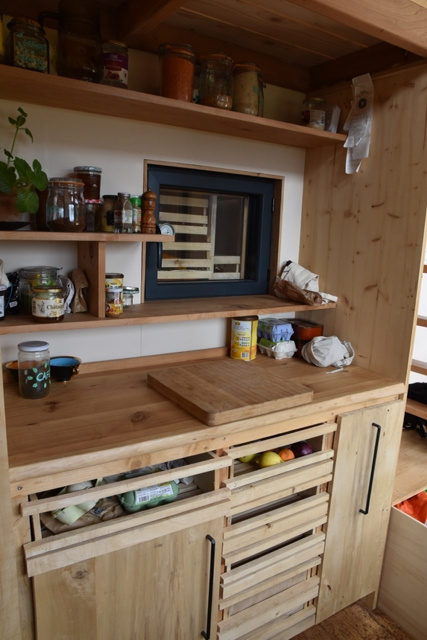
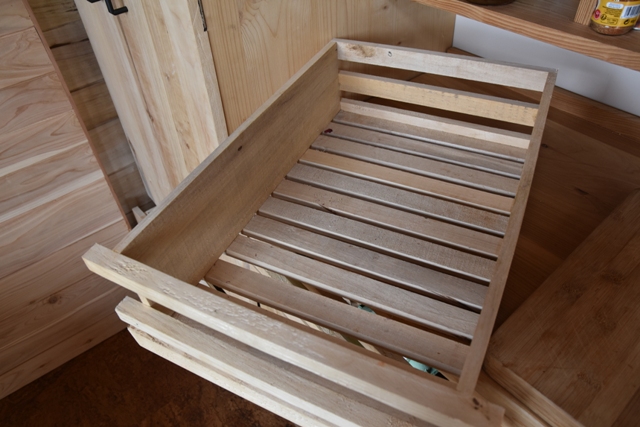
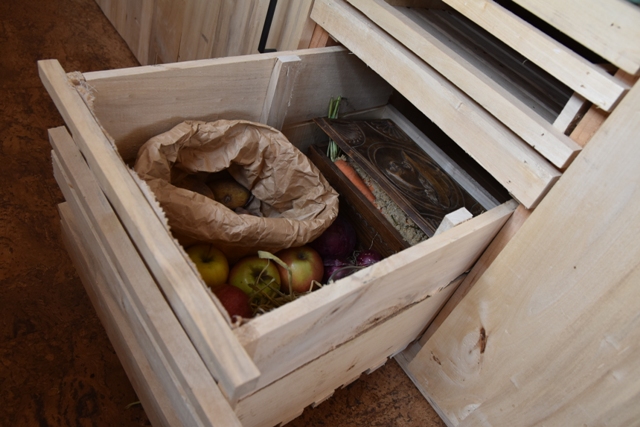
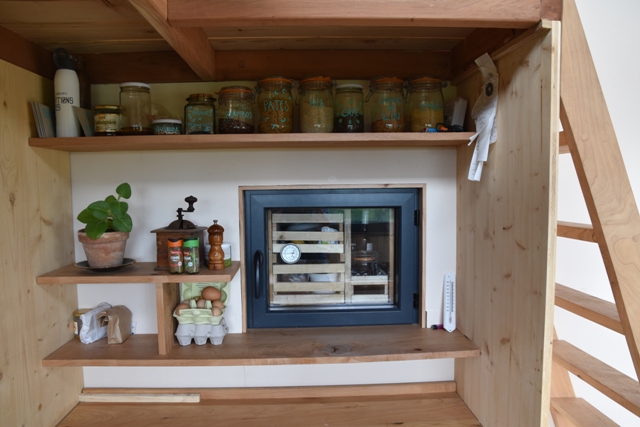
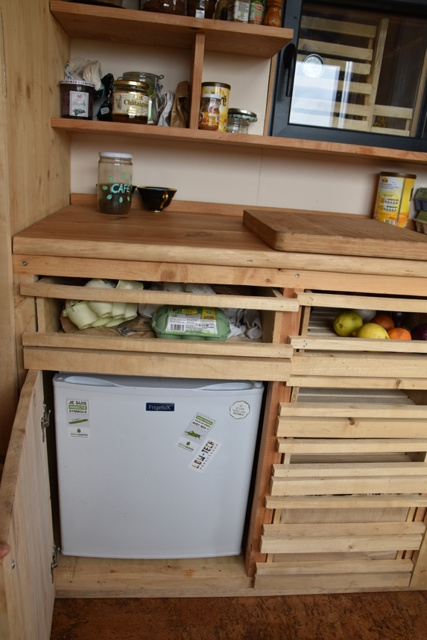
 Français
Français English
English Deutsch
Deutsch Español
Español Italiano
Italiano Português
Português